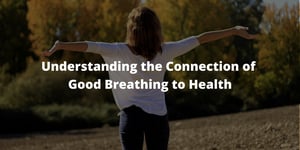The breath grounds, connects, and heals the nervous system, which is why nose breathing is...


The breath grounds, connects, and heals the nervous system, which is why nose breathing is...

As we age, our health concerns often grow. It becomes increasingly important to stay on top of any...

We’d love to share with you six pillars of health that date back thousands of years and come from...

Whether you live with your grandchildren or are visiting via Zoom or other virtual meeting tools,...

Breath is life force and essential to supporting all the functions and systems in our bodies,...

All movement should make you feel great during, after, and days later. You might feel that you have...

Should we accept pain as a normal part of aging?
Chronic tension/pain has become an epidemic across...

How well do you listen to your body? And how do you talk to your body? Did you know that the...

Stress is a fact of life. We have all experienced it at some point in our lives. Stress can be a...

Have you ever considered that how you use your five senses can have an impact on your health? Your...